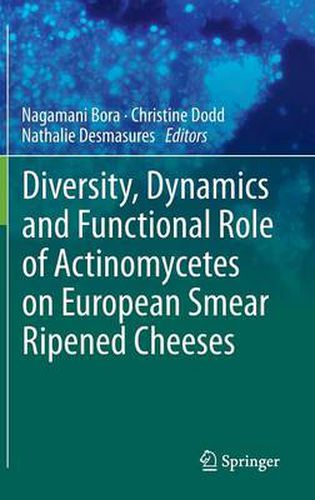Readings Newsletter
Become a Readings Member to make your shopping experience even easier.
Sign in or sign up for free!
You’re not far away from qualifying for FREE standard shipping within Australia
You’ve qualified for FREE standard shipping within Australia
The cart is loading…






This title is printed to order. This book may have been self-published. If so, we cannot guarantee the quality of the content. In the main most books will have gone through the editing process however some may not. We therefore suggest that you be aware of this before ordering this book. If in doubt check either the author or publisher’s details as we are unable to accept any returns unless they are faulty. Please contact us if you have any questions.
Cheese is a significant part of European culture and its production, both industrial and artisanal, is a significant economic activity. Smear cheeses are one element of that diverse cultural and economic activity. And they are an ecological niche which illustrates the diversity of, especially, though not exclusively, actinomycetes. Mainstream ecology looks at the oceans, soil, rhizosphere, human microbiomes and plant, insect and marine animal symbionts which influence the climate, agriculture, human health and the ecology of higher organisms. But food microbiology can influence human well-being and nutrition and, as an ecological niche, illustrates the same broad principles in action as other ecological studies, but, in many ways offers a more controlled and controllable environment to study. The bacterial diversity present on smear cheese surfaces is like a model system which will provide the vehicle for developing a research strategy for food-environment microbiology. In this book we take a look at food-based ecological niche by focusing on the actinomycetes. This book presents many of the aspects, from the taxonomy of the cheese flora and its interaction with the ‘house flora’ to the functional manipulation of the organoleptic properties of the dairy product to the pathogenic risk. Modern methods of taxonomic characterization provide significant data in understanding the functional roles of members of the microbial flora including their enzymatic potential, the presence of virulence genes or probiotic factors. Taxonomy guided high throughput metagenome analysis is a generic approach to systems level analysis of microbial ecosystems, such as those found in the food chain. The data generated by metagenomic analysis will require extensive bioinformatic support which will provide the data not only for taxonomic characterization, community analysis and ecosystem dynamics but the data will also provide a foothold into the evolution and ecosystem function of the community. The ultimate understanding of the metabolome and the regulation of such a complex ecosystem will provide the framework for further technological advances in solid state fermentation.
$9.00 standard shipping within Australia
FREE standard shipping within Australia for orders over $100.00
Express & International shipping calculated at checkout
This title is printed to order. This book may have been self-published. If so, we cannot guarantee the quality of the content. In the main most books will have gone through the editing process however some may not. We therefore suggest that you be aware of this before ordering this book. If in doubt check either the author or publisher’s details as we are unable to accept any returns unless they are faulty. Please contact us if you have any questions.
Cheese is a significant part of European culture and its production, both industrial and artisanal, is a significant economic activity. Smear cheeses are one element of that diverse cultural and economic activity. And they are an ecological niche which illustrates the diversity of, especially, though not exclusively, actinomycetes. Mainstream ecology looks at the oceans, soil, rhizosphere, human microbiomes and plant, insect and marine animal symbionts which influence the climate, agriculture, human health and the ecology of higher organisms. But food microbiology can influence human well-being and nutrition and, as an ecological niche, illustrates the same broad principles in action as other ecological studies, but, in many ways offers a more controlled and controllable environment to study. The bacterial diversity present on smear cheese surfaces is like a model system which will provide the vehicle for developing a research strategy for food-environment microbiology. In this book we take a look at food-based ecological niche by focusing on the actinomycetes. This book presents many of the aspects, from the taxonomy of the cheese flora and its interaction with the ‘house flora’ to the functional manipulation of the organoleptic properties of the dairy product to the pathogenic risk. Modern methods of taxonomic characterization provide significant data in understanding the functional roles of members of the microbial flora including their enzymatic potential, the presence of virulence genes or probiotic factors. Taxonomy guided high throughput metagenome analysis is a generic approach to systems level analysis of microbial ecosystems, such as those found in the food chain. The data generated by metagenomic analysis will require extensive bioinformatic support which will provide the data not only for taxonomic characterization, community analysis and ecosystem dynamics but the data will also provide a foothold into the evolution and ecosystem function of the community. The ultimate understanding of the metabolome and the regulation of such a complex ecosystem will provide the framework for further technological advances in solid state fermentation.